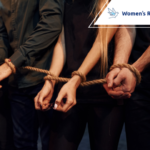Human trafficking doesn’t always involve distant places or dramatic escapes. Many trafficking situations happen quietly inside homes, hidden from view. Victims may be children or adults trapped by fear, isolation, or control. In some cases, signs like physical abuse, lack of freedom, or anxiety go unnoticed—even by neighbors.
From 2012 to 2022, human trafficking prosecutions in the U.S. increased over twofold, highlighting the growing urgency to act. These crimes directly impact child welfare and community safety.
By learning the warning signs of trafficking, you may be able to identify a potential victim and help them find a way out. Here’s how.
Why Homes Are a Common Setting for Human Trafficking

Unlike popular portrayals, traffickers often prefer isolated or private settings like homes because they draw less suspicion. Trafficking within homes may involve domestic workers forced to labor without pay, minors exploited through online platforms while still living at home, or individuals trafficked by family members or intimate partners.
California’s size, diversity, and economy make it a hotspot for such cases. According to the National Human Trafficking Hotline, California consistently ranks highest in the number of reported incidents. Many cases go unnoticed because victims fear retaliation, lack legal documentation, or don’t even recognize that they are being trafficked.
California human trafficking laws define trafficking as the use of force, fraud, or coercion to obtain labor or commercial sex acts. When the victim is a minor, coercion does not need to be proven. The law applies whether the trafficking occurs in a business, hotel, or private residence.
Common Signs of Human Trafficking in Residential Areas
Being informed about the signs of human trafficking can make all the difference. Here are red flags to look for:
- Lack of freedom or privacy – Individuals rarely seen outside, are always accompanied, or appear to have restricted movement.
- Signs of fear or anxiety – Victims may avoid eye contact, seem nervous around authority figures, or appear coached.
- Poor living conditions – Overcrowded spaces, boarded-up windows, or unusual foot traffic at all hours.
- Inconsistent stories – Those living in the home may not know details about where they are, what city they’re in, or how long they’ve been there.
- Evidence of abuse or neglect – Bruises, malnourishment, or lack of access to healthcare and education.
Understanding the Victim’s Perspective
Recognizing a potential victim is important—but so is understanding why they may not ask for help. Many victims are manipulated to believe they are at fault or are threatened with harm to themselves or their families. Others face language barriers, fear of deportation, or distrust of law enforcement due to past trauma.
Children, in particular, may not even realize they are being exploited. Their understanding of personal safety and boundaries may be limited, especially when abuse comes from someone they know. This makes protecting child welfare even more critical.
Support begins with compassion. Avoid judgment and listen without pressure. Offer reassurance that help is available. Be patient if someone hesitates to speak.
Your role isn’t to rescue—it’s to recognize, report, and refer. By approaching these sensitive situations with care, you can help break the cycle of control and give victims a chance to reclaim their lives.
What You Can Do: Steps to Support Victims and Raise Awareness
1. Stay Informed
Learn more about California human trafficking laws and victim rights. Education empowers action. Follow credible organizations and attend local trainings. You can also explore our blogs for accessible, updated insights on related legal and safety topics.
2. Report Concerns Safely
If you notice suspicious activity, never intervene directly. Instead:
- Call the National Human Trafficking Hotline: 1-888-373-7888
- Text “HELP” to 233733 (BEFREE)
- Contact local authorities if someone is in immediate danger
3. Support Local Organizations
Donate to or volunteer with nonprofits that help survivors. Legal, medical, and housing services are essential for long-term recovery.
4. Promote Community Awareness
Talk to your neighbors, schools, and workplaces. Share accurate information and encourage open discussions about trafficking. Raising community awareness breaks the silence traffickers rely on.
5. Use Your Influence
Landlords, teachers, healthcare workers, and community leaders can all play a role in identifying and reporting trafficking. If you have a platform, use it to inform and educate.
Legal Help for Victims and Allies
If you suspect a potential trafficking situation, trust your instincts and take safe, informed steps. You don’t need to have all the answers to make a difference. Recognizing and reporting the signs to trusted law enforcement agencies or support services can change—or even save—a life.
Whether someone is facing involuntary servitude, sexual abuse, or living in fear, no human trafficking victim should have to navigate the legal process alone. Our experienced lawyers offer free, confidential consultations to victims, survivors, and concerned community members.
Reach out today. Together, we can protect lives and seek justice.






